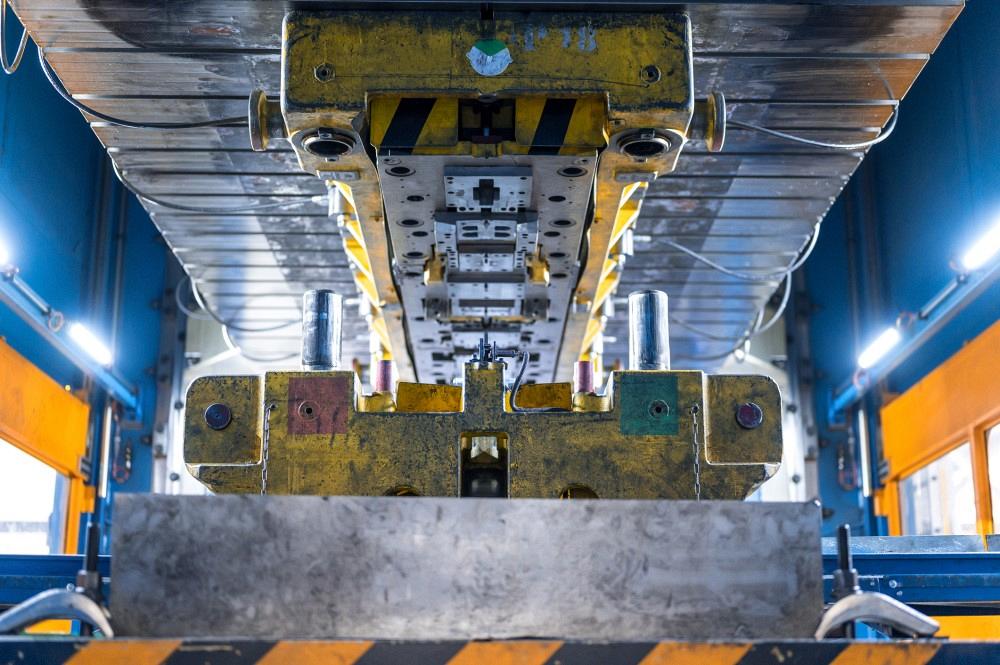President
- FMA
- The Fabricator
- FABTECH
- Canadian Metalworking
Categories
- Additive Manufacturing
- Aluminum Welding
- Arc Welding
- Assembly and Joining
- Automation and Robotics
- Bending and Forming
- Consumables
- Cutting and Weld Prep
- Electric Vehicles
- En Español
- Finishing
- Hydroforming
- Laser Cutting
- Laser Welding
- Machining
- Manufacturing Software
- Materials Handling
- Metals/Materials
- Oxyfuel Cutting
- Plasma Cutting
- Power Tools
- Punching and Other Holemaking
- Roll Forming
- Safety
- Sawing
- Shearing
- Shop Management
- Testing and Measuring
- Tube and Pipe Fabrication
- Tube and Pipe Production
- Waterjet Cutting
Industry Directory
Webcasts
Podcasts
FAB 40
Advertise
Subscribe
Account Login
Search
Analyzing the system of metal stamping
Controlling manufacturing variables leads to improved production results
- By Bill Frahm
- November 12, 2020
- Article
- Bending and Forming

When you analyze a metal forming process, you begin to see the many attributes that influence the quality of a stamper's processes and components. Getty Images
A system analysis of the forming process reveals the many variables that lead to success or failure. Most of the variables in forming are related to:
- Material behavior.
- Loading.
- Boundary conditions.
From anisotropy to lubrication, your ability to measure and manage these variables is key to efficient production and troubleshooting, ensuring you can form quality components efficiently. Equally important, when you understand, measure, and manage these attributes, you can identify the sources of problems and remedy them.
Stamping as a System
When you look beyond the hardware, stamping is primarily a system of inputs, processes, and outputs. When you analyze them, you begin to see the many attributes that influence the quality of your processes and components. When you’ve identified these attributes, you can:
- Develop a plan to understand those attributes and their influence on forming,
- Measure the properties of inputs and supporting process components to determine their compliance with specifications, identify correlations between attribute values and production events, and determine possible causes of undesirable events.
- Manage operations and material inputs for better production results.
In a simple, high-level process diagram (see Figure 1), the inputs include the blank and control attributes for the stamping operation. Outputs include the formed components and status information generated from the press and monitoring devices.
Once you know the general categories of inputs and outputs, you can start to break down each category into the information and attributes that influence forming results. A brief, but not comprehensive, list of measurable attributes is shown in Figure 2.
If you measure your important attributes, software can help identify the properties, control attributes, and process measurements most likely to lead to equipment and component quality failure, as well as the range of attributes most likely to build quality components. Using this information, you can:
- Manage the design, specification, receipt, and quality of coils and blanks.
- Improve your simulation results for die design.
- Identify issues and manage press controls and operations.
- Plan equipment maintenance for reliability.
Manufacturing for Design
Both the design and production organizations must build channels to share and listen to each other’s needs and experiences. Better design comes from greater learning and understanding of the results from previous components.
Design for manufacturing is a common term that defines the need to design components in a way that supports efficient manufacturing. Conversely, production also needs to support design through feedback loops—sharing lessons learned in production with the design team. Production lessons can be valuable to the design team for improved component and production design. And of course, improved design will in turn help improve production results.
In addition to feedback loops, the Internet of Things offers tremendous opportunity for continuous learning and improvement. Both design and production can identify design-related problems and learn to develop better component designs. This can lead to fewer die tryouts and better manufacturing processes.
Looking Forward
New technologies and monitoring systems offer sheet metal forming organizations unprecedented opportunities to learn about the influences of material behavior, loading, and boundary conditions. While there are many variables, well-designed monitoring and analysis systems are among your best tools to capture and measure the current state of your materials and processes to identify issues and opportunities.
About the Author

Bill Frahm
P.O. Box 71191
Rochester Hills, MI 48307
248-506-5873
subscribe now

The Fabricator is North America's leading magazine for the metal forming and fabricating industry. The magazine delivers the news, technical articles, and case histories that enable fabricators to do their jobs more efficiently. The Fabricator has served the industry since 1970.
start your free subscription- Stay connected from anywhere

Easily access valuable industry resources now with full access to the digital edition of The Fabricator.

Easily access valuable industry resources now with full access to the digital edition of The Welder.

Easily access valuable industry resources now with full access to the digital edition of The Tube and Pipe Journal.
- Podcasting
- Podcast:
- The Fabricator Podcast
- Published:
- 04/16/2024
- Running Time:
- 63:29
In this episode of The Fabricator Podcast, Caleb Chamberlain, co-founder and CEO of OSH Cut, discusses his company’s...
- Trending Articles
Capturing, recording equipment inspection data for FMEA

Tips for creating sheet metal tubes with perforations

Are two heads better than one in fiber laser cutting?

Supporting the metal fabricating industry through FMA

Omco Solar opens second Alabama manufacturing facility

- Industry Events
16th Annual Safety Conference
- April 30 - May 1, 2024
- Elgin,
Pipe and Tube Conference
- May 21 - 22, 2024
- Omaha, NE
World-Class Roll Forming Workshop
- June 5 - 6, 2024
- Louisville, KY
Advanced Laser Application Workshop
- June 25 - 27, 2024
- Novi, MI



























